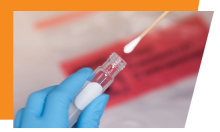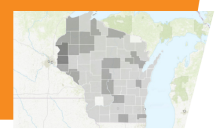COVID-19 (Coronavirus Disease)
COVID-19 is a respiratory disease that can cause severe illness. COVID-19 spreads easily from person to person when someone who is sick breathes out droplets and very small particles with the virus. These droplets and particles can be breathed in by other people or land on their eyes, noses, or mouth and make them sick.
The Wisconsin Department of Health Services (DHS) recommends the following prevention strategies to prevent COVID-19 infection.
- Stay up to date on COVID-19 vaccines.
- Get tested for COVID-19 if you have symptoms or were exposed to someone with COVID-19.
- Stay home if you have COVID-19 or COVID-19 symptoms.
- Seek treatment if you have COVID-19 and are at risk of getting very sick.
- Wear a well-fitting mask when recommended.
With widespread access to vaccines, testing, and treatment options, we have more tools than ever before to prevent severe disease.
Information on COVID-19
Learn how to protect yourself and others from serious illness and find the support you need to stay healthy.
Stay up to date on COVID-19 vaccines
Get the facts on the COVID-19 vaccine, including how to stay up to date with COVID-19 vaccines.
See basic information on COVID-19 testing, including when to get a test, how to get a test, and what to expect.
Learn about COVID-19 treatments and how to access antiviral treatments.
Get the latest statistics, learn how our data is collected, and more.
What to do if you are sick or a close contact
Know the symptoms of COVID-19 and next steps after you are exposed or diagnosed.
Guidance for K-12 Schools and Early Care Education (ECE)
Find resources to help decision-makers plan, prepare, and respond to COVID-19 in K-12 schools and ECEs.
Download COVID-19 educational resources—from posters and signs to fact sheets and videos—in multiple languages.
Resources for health care partners
Find guidance and resources for partners in a variety of health care settings.









